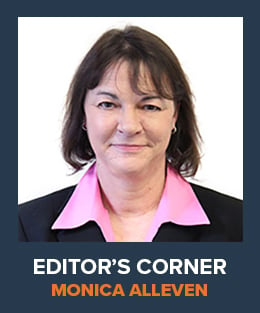
There were plenty of calls during Wednesday’s Senate hearing on the race to 5G to set aside more spectrum for licensed cellular and 5G. But a significant number of voices were also calling for more spectrum for unlicensed uses.
Sen. John Thune, R-S.D., chairman of the committee, kicked things off by reminding everyone that the U.S. must be mindful of the critical role unlicensed spectrum plays. Sure, there’s a desperate need for more low-, mid- and high-band spectrum for licensed services, especially midband.
But given new spectrum sharing techniques and advancements in interference mitigation technologies—not to mention Wi-Fi’s current congested state of affairs—it’s clear that ascertaining more spectrum for unlicensed is paramount. There are really no vacancies in the 2.4 GHz band and the 5 GHz is getting more crowded, which is why the upper part of the band, at 5.9 GHz, has been attractive.
Problem is, the U.S. more than 20 years ago allocated 5.9 GHz spectrum for Intelligent Transportation Services (ITS), which is where the Dedicated Short Range Communications (DSRC) camp is parked. And it’s showing no signs of moving on out.
So the neighbor next door, the 6 GHz band, looks increasingly attractive. There again, incumbents have to be considered. But as Qualcomm’s Dean Brenner pointed out during Wednesday’s hearing, the incumbents are fixed, so “we know where they are” and can work around them.
RELATED: Google, Facebook, others press for 6 GHz rulemaking
A group of tech companies including Qualcomm, Apple, Facebook and Google have suggested a framework for interference-protection rules that would segment the 6 GHz band and allow the FCC to apply specific mitigation measures tailored to each sub-band. The group is pressing the FCC to advance 6 GHz to a Notice of Proposed Rulemaking (NPRM) stage, which the FCC could consider this fall.
Concurrently, the 5.9 GHz spectrum seems to be getting more muddled, with automobile manufacturers keeping up the pressure to leave DSRC well enough alone. Even though the spectrum lay fallow for decades, certain auto makers are acting as though it’s the most viable way to get to safer roads. Some state highway departments are hedging their bets, accommodating both DSRC and C-V2X until the connected car market figures itself out.
A Toyota representative again recently visited the FCC to dispute claims that LTE-based V2X is currently a viable alternative to DSRC. Toyota raised questions (PDF) about the reliability of test results recently shared by LTE V2X proponents and argued that sharing the band with unlicensed devices would be made more challenging if a non-DSRC technology were permitted to use the band. This, after General Motors announced plans to further expand its DSRC deployment in the U.S.
RELATED: Editor's Corner—DSRC vs C-V2X: It's one fine mess
These moves alone are not enough to give up on 5.9 GHz for C-V2X, but taken along with the lack of movement thus far, it underscores why some Wi-Fi stakeholders have mostly given up on 5.9 GHz. It’s more worthwhile to spend time and energy on 6 GHz.
Last year, Senators Cory Gardner, R-Colo., and Maggie Hassan, D-N.H., introduced the Airwaves Act that proposes that the United States repurpose spectrum for licensed and unlicensed uses, including in the 3.7-4.2 GHz and 6 GHz bands, and it’s garnered more bipartisan support since then. Lawmakers this week were keen to point out the efforts they’ve already undertaken to get the FCC to look at these other unlicensed opportunities.
Brenner, senior vice president of Spectrum Strategy and Technology at Qualcomm, told lawmakers that there are some good reasons to be excited about the potential for 6 GHz. For one, it offers 1200 megahertz, so it’s a wide band, and while there are incumbents, they’re fixed.
The “look before talk” technology (as opposed to the current “listen before talk”) that is being developed along with 5G would be perfect for some part of the 6 GHz band because it’s brand new technology, he said. Another reason to be excited is the advent of 802.11ax, the next generation of Wi-Fi, which could be used at 6 GHz, as well as the cellular technology known as LAA that achieves gigabit speeds.
The FCC can unleash 150 megahertz of spectrum if it finalizes rules for the 3.5 GHz Citizens Broadband Radio Services (CBRS) band, which a lot of people are waiting on. And it would be great to see something get settled for 5.9 GHz, but given the situation there, it’s no doubt faster and easier for the unlicensed communities to pin their hopes on 6 GHz. – Monica | @fiercewrlsstech | @malleven33

